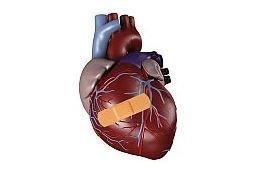Disappearing stent hailed as cardiac revolution
08 March 2013 | News | By BioSpectrum Bureau

Bioresorbable vascular scaffold (BVS) or disappearing stent has been hailed as the fourth revolution in management of coronary artery disease
Bangalore: The recently launched bioresorbable vascular scaffold (BVS), which is also known as disappearing stent, is being hailed as the fourth revolution in management of coronary artery disease for its ability to unblock and then make arteries return to natural form. This was the unanimous conclusion of India's biggest conference on interventional cardiology that took place at Hotel ITC Grand Chola, Chennai, from February 27 to March 2, 2013.
Dr Samin K Sharma, director, clinical and interventional cardiology, Mount Sinai Medical Center, US, said that, "If BVS is used in the treatment of coronary artery disease, the long term benefits are huge. Since the stent will leave body after two years after doing its work of clearing blockages, patient will not have to take blood thinning medicines lifelong and the vessels can return to its natural form making it work as per body needs. It is nothing less than a dream come true."
"Unlike western world, the prevalence of heart disease is significantly high among young people in India. For these people, the dissolving stent is a blessing as they will no longer have to worry about any alteration in natural artery structure in their long life ahead," Dr Sharma said.
According to Dr Mathew Samuel, father of angioplasty, and Dr Antonio Colombo, world leader in interventional cardiology from Italy, angioplasty with conventional stents has always carried the fear of clot because of stent called late stent thrombosis. This is seen in about 10 percent of patients after one or two years. This problem is expected to be less if BVS is used. BVS or Absorb is a first-of-its-kind device for the treatment of coronary artery disease (CAD). It works by restoring blood flow to the heart similar to a metallic stent, but then dissolves into the body, leaving behind a treated vessel that may resume more natural function and movement.
The potential long-term benefits of a scaffold that dissolves are significant. The vessel may expand and contract as needed to increase the flow of blood to the heart in response to normal activities such as exercising; treatment and diagnostic options are broadened; the need for long-term treatment with anti-clotting medications may be reduced; and future interventions would be unobstructed by a permanent implant. Absorb is supported by a robust clinical trial program that encompasses five studies in more than 30 countries around the world and is approved for use by Drug Controller General of India.












